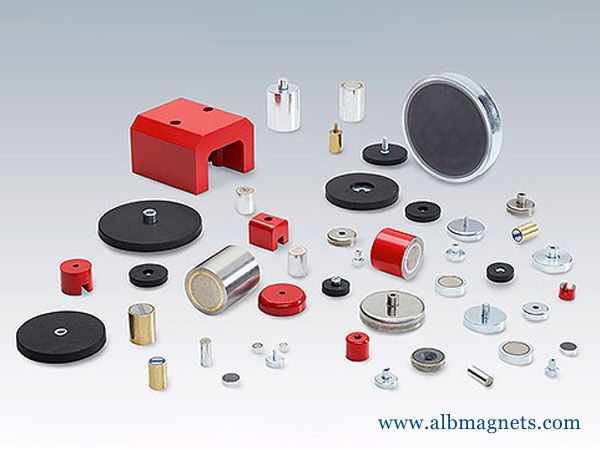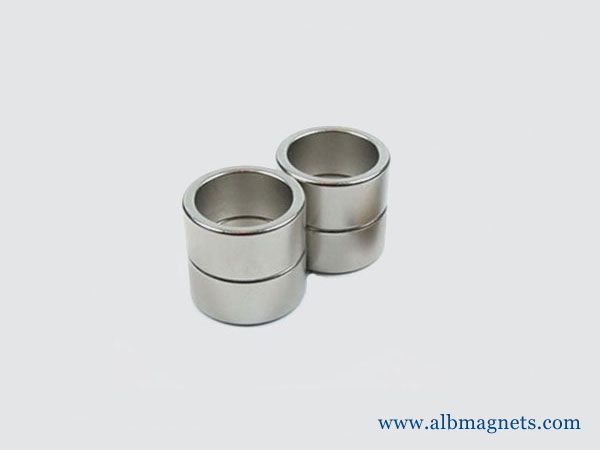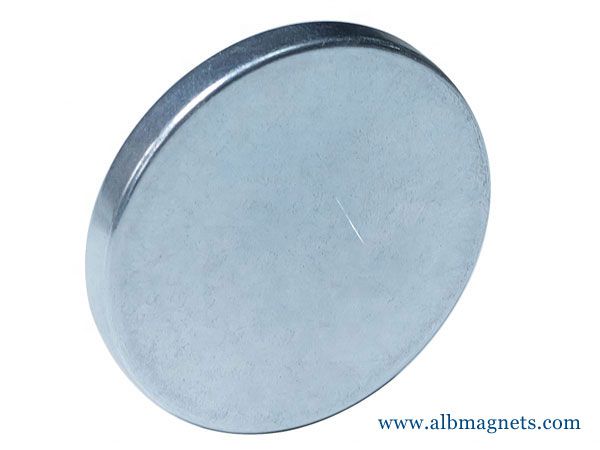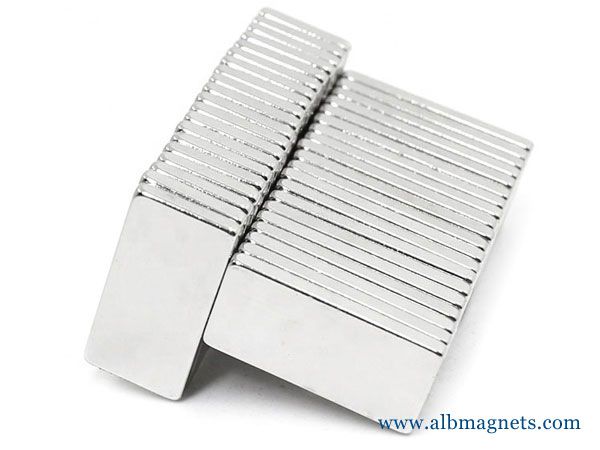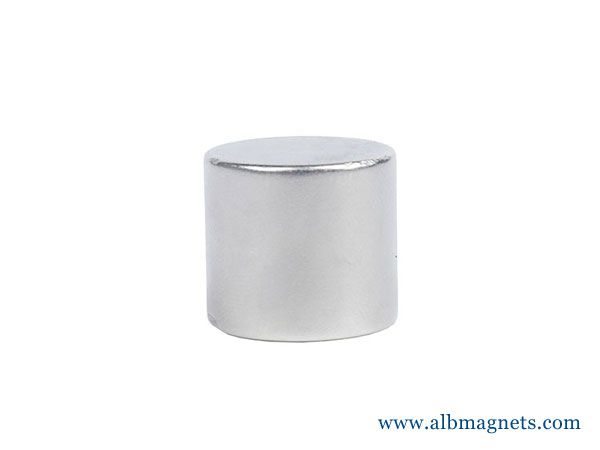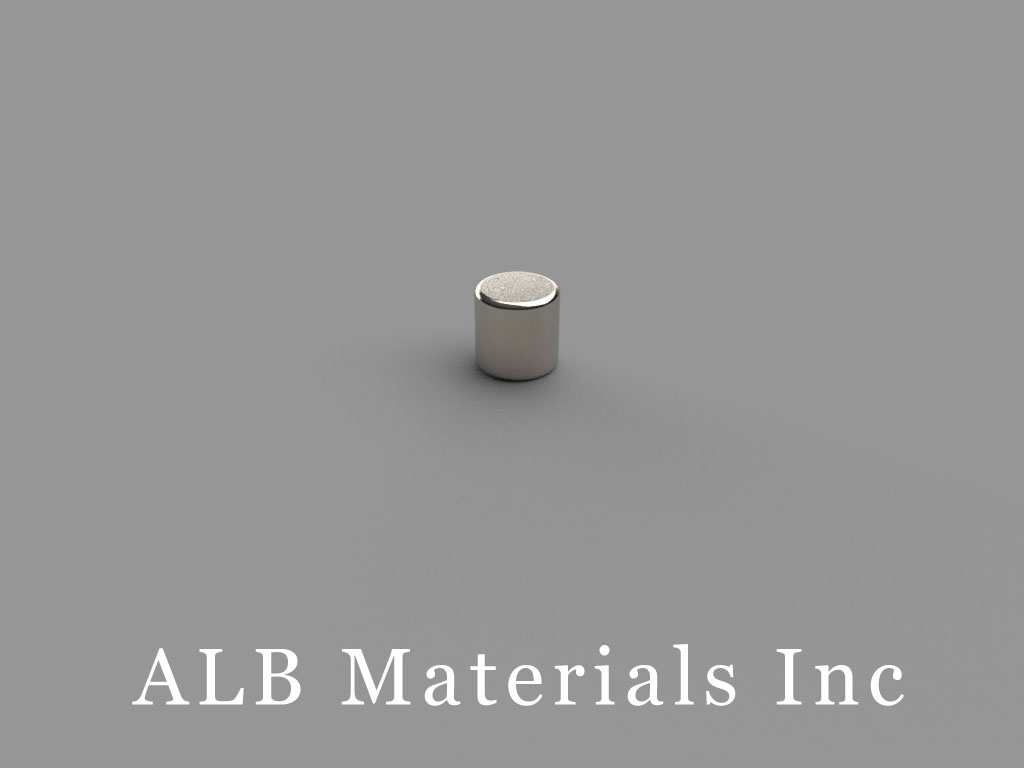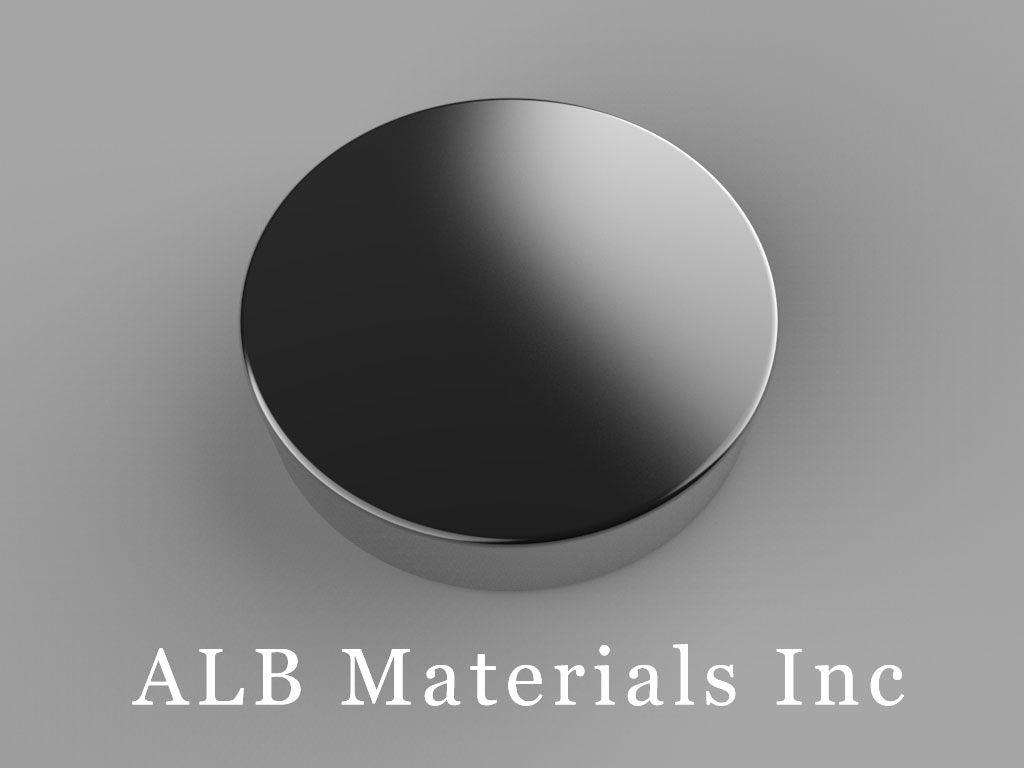401 Ryland St. Ste 200-A,
Reno, NV 89502
United States
E-mail: sales@albmaterials.com
- D9x2mm Neodymium Magnet, 9 x 2mm Disc Magnet
- C-D10H10-N50 Neodymium Magnet, 10x10mm Cylinder Magnet
- C-D5H10-N50 Neodymium Magnet, 5x10mm Cylinder Magnet
- R621 Neodymium Magnets, 3/8 inch od x 1/8 inch id x 1/16 inch thick
- D-D12.7H3.175-N50 Neodymium Magnet, 12.7x3.175mm Disc Magnet
- R-OD8H3ID6.1-N50HBE Neodymium Magnet, OD8xID6.1x3mm Ring Magnet
- BX0C2 Neodymium Magnets, 1 inch x 3/4 inch x 1/8 inch thick
- BY0Y0Y0 Neodymium Magnets, 2 inch x 2 inch x 2 inch thick
- BY0X08-N52 Neodymium Magnets, 2 inch x 1 inch x 1/2 inch thick
- RC24DCSPC-BLK Plastic Coated Neodymium Magnets
- B551 Neodymium Magnets, 5/16 inch x 5/16 inch x 1/16 inch thick
- R-OD2.5inH0.6inID1.4in-N52 Neodymium Magnet, OD63.5xID35.56x15.24mm Ring Magnet
- B60x6x2mm Neodymium Magnet, 60 x 6 x 2mm Block Magnet
- B35x15x3mm Neodymium Magnet, 35 x 15 x 3mm Block Magnet
- R-OD13H2ID5-N35 Neodymium Magnet, OD13xID5x2mm Ring Magnet
- D7A Neodymium Magnets, 7/16 inch dia. x 5/8 inch thick
Unique Motor Uses Only Permanent Magnets
Types of Magnets
What types of magnets exist in the world?
First, a definition. Magnets are solid objects that attract iron or steel.
Magnets do this by a phenomenon called magnetism, in which they generate a force that extends into a (magnetic) field (i.e., the area around the magnet).
A magnet may have the ability to do this naturally, such as lodestone, or it may acquire the ability when combined with other elements (e.g., samarium cobalt).
Types of Magnets: The three types of magnets are temporary, permanent, and electromagnets.
Magnets are categorized by their source of magnetism.
Temporary magnets become magnetized in the presence of a magnetic field.
They lose their magnetism gradually when the magnetic field is removed.
Some irons and iron alloys, as well as paper clips and nails, function as temporary magnets.
screwdrivers can be temporarily magnetized
Permanent magnets do not easily lose their magnetism.
These magnets may be naturally-occurring (“rare-earth”) elements or chemical compounds.
Permanent magnet examples include Alnico (an alloy of aluminum, nickel, and cobalt) and ferrites (ceramic-like material made from a mix of iron oxides with nickel, strontium, or cobalt).
Electromagnets are created by running an electrical current through a coil with a metal core.
The energized coil creates a magnetic field.
When the current is shut off, the magnetic field disappears.
Electromagnets are preferred for applications that require strength including railroad tracks, motor engines, MRI machines, and cranes.
They’re also used in computer and television hardware.
cranes use electromagnets
Magnets in Experiments
Permanent magnets are commonly made from ceramic, alnico, and neodymium.
Ceramic magnets are strong and work well for most experiments.
Alnico magnets are stronger and more expensive and work very well for science experiments.
Neodymium magnets are the strongest and most expensive of the three.
Unique Motor Uses Only Permanent Magnets
New Discovery Could Lead to Commercial Production of Permanent Magnet Motors
A revolutionary motor employs only permanent magnets to attract and repel forces in sequence, producing continued motion like a conventional electric motor without reversing polarity or using an external power source.
Permanent magnets are an integral part of many motors that take advantage of advances in obtaining powerful and stable magnetic materials.
Today, rare earth magnets containing lanthanide elements such as neodymium and samarium carry large magnetic moments.
For example, a neodymium (NdFeB) magnet comprised of neodymium, iron, and boron and measuring only 10.16cm X 10.16cm X 5.08cm can have a Brmax of 14,800, a surface field Gauss of 4,933, a pull force of 557 kg, and is stable at 176ºF.
Unless overheated or physically damaged, the magnet will lose less than 1% of its strength over 10 years.
To see the impact of permanent magnets we have to look at a typical electric motor.
As an external power source passes through the rotor field, it serves as an electromagnet that is attracted to the permanent magnet causing the motor to rotate.
For continued rotation, the electromagnet allows the rotor field to reverse the polarity of its magnetic field producing repulsion.
The repulsive force between the poles repels the electromagnet along its path of motion.
If the polarity of the rotor is not reversed, the attractive force that pulled the electromagnet toward the permanent magnet will prevent the electromagnet from escaping and cause it to return and rest opposite the permanent magnet.
1(A) The basic principle of an electric motor with an electromagnet and a permanent magnet.
1(B) Continued motion beyond attraction occurs by reversing the polarity of the electromagnet to generate a repulsive force.
An electric motor that uses permanent magnets does not have field windings that serve as electromagnets on the stator frame.
Instead, the permanent magnets on the stator frame provide the magnetic fields that interact with the rotor field to produce torque.
This eliminates the need to power the stator, thereby reducing electrical energy consumption.
Electric motors, with or without the use of permanent magnets, produce rotation from a repeated sequence of attraction followed by repulsion, which requires reversing polarity.
Many attempts have been made to construct a motor using only permanent magnets to generate the magnetic fields for both the stator and the rotor, but they did not succeed.
Such a motor would be powered entirely by the intrinsic magnetic fields generated by permanent magnets.
The discovery presented here allows permanent magnets to attract and repel in sequence, producing continued motion like an electric motor and without reversing polarity or the use of an external source of energy.
Most of us have handled permanent magnets and experienced the attractive and repulsive forces that occur between them. It is easy to imagine having the magnets do work for us.
For example, the attractive force between two sufficiently strong permanent magnets can move an object as the magnets pull themselves together.
However, to have the magnets repeat this work, they must be pulled apart.
The amount of work or mechanical energy required to pull the magnets apart is similar to the amount of mechanical energy the magnets generated when they pulled themselves together.
Accordingly, permanent magnets are unable to work continuously on their own without an external source of mechanical energy to repeatedly pull them apart.
2. Polar attraction.
Typical field lines that generate attractive forces (arrows) in the polar plane between opposite poles of permanent magnets.
2 illustrates typical field lines between opposite poles of two permanent magnets that generate the commonly experienced attractive force exerted in the polar (vertical) plane.
The attractive force generated by sufficiently strong magnets can pull the magnets together over a distance until they come to rest in contact with one another.
The attractive force between opposite poles can also pull the magnets together along an equatorial (horizontal) plane until they come to rest opposite one another.
3 illustrates the field lines responsible for this horizontal attraction.
3. Equatorial attraction.
Typical field lines that generate attractive forces (arrows) in the horizontal (equatorial) plane between opposite poles of permanent magnets.
It is common for attract and repel forces to exist between two magnets with opposite poles facing as illustrated in Fig.
4. However, the repulsive force in the polar plane is usually very weak compared to the attractive force in the same plane causing the resultant force to be the attraction.
We have created a unique condition in which the fields of two permanent magnets with opposite poles facing, generate a resultant attraction force between them in the equatorial plane and a resultant repulsion force in the polar plane, simultaneously.
4. Resultant attraction (blue arrows) in the polar and equatorial planes between two magnets with opposite poles facing.
Weak repulsion (red arrows) in the polar plane commonly exists between permanent magnets with opposite poles facing.
5 illustrates the field lines responsible for the simultaneous equatorial attract (blue arrows) and polar repel (red arrows) forces occurring between a pair of permanent magnets.
The unusual resultant repulsion in the polar plane is a result of the shape of the magnets and their positions and is generated between like poles even though the magnets have their opposite poles facing one another.
The resultant attractive force exerted in the equatorial plane can be used to pull the magnets together horizontally.
The resultant repulsive force exerted in the polar plane can, in turn, be used to push the magnets apart vertically without reversing polarity or the use of other energy.
Thus, two permanent magnets are made to pull themselves together with an attractive force and then push themselves apart unaided by an external force or other energy.
5. Simultaneous resultant equatorial attraction and polar repulsion between magnets with opposite poles facing.
Blue arrows indicate the field lines responsible for the equatorial attraction and red arrows indicate the field lines responsible for the polar repulsion.
Normally, an external force must be applied to separate two permanent magnets that have pulled themselves together with their attractive force.
Until now, we have not observed two permanent magnets attract and repel themselves in sequence, unaided.
This sequence of attraction followed by repulsion is like the attract-repel sequence that occurs in an electric motor between a permanent magnet and an electromagnet.
Attract-Repel Demo
We constructed an apparatus to demonstrate the simultaneous resultant attraction in the equatorial plane and the resultant repulsion in the polar plane between two permanent magnets with opposite poles facing one another.
To reduce friction during motion, the permanent magnets were attached to carts with eight wheels.
Four permanent magnets were positioned on each cart.
The magnets were made of neodymium (NdFeB), grade 52, and measured 5.08 cm long, 2.54 cm wide and 1.27 cm thick.
They were magnetized through their 1.27 cm thickness.
Each magnet has a Brmax of 14,800 Gauss and pulls force of 41.28 kg.
To minimize magnetic interference, the carts and rails were made of aluminum alloy and the screws and nuts were made of brass.
The resultant attractive and repulsive forces were measured using an IMADA model DS2-110 digital force gauge.
Resultant forces applied to the carts were measured at 3.18 mm intervals along the horizontal and vertical paths of motion.
Measurements were made of the resultant attractive force in the equatorial plane responsible for horizontal motion, as shown in Fig.
6. Measurements were also made of the resultant repulsive force in the polar plane responsible for vertical motion
Equatorial attractive force versus distance.
Force measurements were taken at 3.18 mm intervals over the distance traveled in the equatorial plane.
The combined force values from the attractive force in the equatorial plane and repulsive force in the polar plane is presented in Fig.
8. A surplus of mechanical energy is available from total force (mechanical energy) available during the attraction and repulsion phases.
This surplus of energy can be used to do work such as drive an electric generator.
The data provided here are intended only to illustrate the phenomenon and do not represent the optimal conditions for maximum energy output.
7. Polar repulsive force versus distance.
Force measurements were taken at 3.18 mm intervals over the distance traveled in the polar plane.
Motor Design Considerations
Repeating the sequence of attraction and repulsion described here requires that the magnets return to their starting positions.
However, the short distance traveled by the magnets described here leaves them within the attractive and repulsive fields responsible for their initial motion.
Therefore, returning the magnets to their starting positions would be opposed by these residual attractive and repulsive forces, respectively.
8. Combined attractive and repulsive forces shown in figures 6 and A considerable amount of mechanical energy would have to be spent to overcome these forces when returning the magnets.
These opposing residual forces and the expenditure of energy to overcome them can be greatly reduced by extending the distance traveled by magnets H and V.
if magnet V were made to travel 15.24 cm vertically instead of 6.35 cm, magnet H could then move back horizontally to its starting position without encountering significant opposition from the attractive force in the polar plane.
With extended travel distances, the resultant attractive force in the equatorial plane initially will be too weak to pull magnet H horizontally.
9 illustrates how pairs of magnets can be linked together to tow one another along a portion of their travel.
The repulsive force between magnets V1 and H1 is sufficiently strong for magnet V1 to tow magnet H2 in closer to magnet V2 where the attractive forces are stronger.
In turn, the attractive force between magnets V2 and H2 can tow magnet V1 further away from magnet H1.
The motion generated by two pairs of magnets linked together is illustrated in Fig.
9. This connection of magnet pairs in different phases of the attraction and repulsion sequence is like the arrangement of pistons in a combustion engine in which the combustion stroke of one piston drives the exhaust stroke of another piston.
Another similarity exists in that both magnets and pistons travel along linear paths as they provide mechanical energy.
9. Travel distances extended by linking pairs of magnets.
Magnet V1 is connected to Magnet H2 of another pair.
(A) A repulsive force (red arrow) exists in the polar plane between magnets V1 and H1.
No significant force exists between magnets V2 and H2.
The repulsive force in the polar plane acting on magnet V1 moves magnet V1 away from magnet H1 and tows magnet H2 toward magnet V2.
When magnet H2 moves closer to magnet V2 an attractive force (blue arrow) in the equatorial plane begins to pull magnet H2 towards magnet V2.
This attractive force will increase in strength as magnet H2 moves closer to magnet V2 allowing magnet H2 to tow magnet V1 further away from magnet H1.
(B) Magnets V1 and H2 have traveled a further distance than either would have traveled alone.
Mechanical energy can be conserved by making the magnets work at both ends of their travel.
In this manner, energy is not wasted returning the magnets to their original positions to repeat the cycle.
Connecting four pairs of magnets completes the cycle, allowing for continued motion driven entirely by permanent magnets.
It is noted here that the stator and rotor in a conventional electric motor require several pairs of magnets to achieve continued motion.
The attraction and repulsion sequence between one stator magnet and the electromagnet (rotor) cannot produce sufficient inertia to turn the rotor one full rotation and repeat the cycle.
Likewise, the method described here requires the use of multiple pairs of permanent magnets to extend travel distances and complete a cycle.
Commercial Application
The method described here illustrates how permanent magnets alone can be used to produce continuous motion and provide a surplus of mechanical energy that can be used for other purposes such as driving an electric generator.
For many reasons, electromagnetic energy from permanent magnets is a highly practical, clean, and abundant source of energy.
Electromagnetic force has been calculated to be 39 orders of magnitude stronger than gravitational force and its intrinsic source is abundant.
The amount of energy required to create permanent magnets is insignificant compared to the amount of electromagnetic energy intrinsically available from them after they are magnetized.
Iron, the most common ferromagnetic substance, is the second most abundant metal on Earth.
The powerful magnets containing neodymium and samarium are not required to generate a practical amount of net mechanical energy using the method described here.
Other weaker permanent magnets can be used.
The stability (coercivity) and strength (magnetic moment) of permanent magnets today are extremely high.
The magnitude of the electromagnetic forces exerted between magnet pairs to generate mechanical energy as described here is below the coercivity value of the magnets.
Therefore, the magnets will remain stable under normal operating conditions.
The Future
A permanent magnet motor has been constructed and it is undergoing testing.
Also, a patent has been applied for the motor and its details will not be available until the patent is granted.
One feature still to be determined is the best way to turn the motor on and off.
With a typical electric motor, you merely use a switch to turn the power on to activate the motor and then turn the power off to stop the motor.
You can’t do that with a motor consisting of permanent magnets. Several methods of interruption are under consideration. One approach is to use an electromagnet to provide braking.
The electromagnet would only be powered during the braking period and would be off when the motor is running.
Uses of Temporary Magnets and Types of Magnets Examples
Magnet is a material that can attract iron objects and temporary magnets are those which work as a permanent magnet when they are in domain range of permanent magnet attaching to objects and lose their magnetism when they are apart from the permanent magnet.
The magnet attracts objects made of nickel-iron and cobalt and magnet has 2 poles north pole and south pole and opposite poles of two magnets attract each other i.e.
the north pole and south pole and south pole and the north pole of other magnet attract each other and poles of two magnets repel each other and temporary magnets use basically electromagnets are they are useful in many ways in daily life and uses of temporary magnets.
What is temporary Magnets Used For:
The main uses of temporary magnets are used to make temporary electromagnets and let’s see the uses of temporary magnets
The main uses of temporary magnets are used to make temporary electromagnets and let’s see the uses of temporary magnets:
Use of temporary magnets to separate material made of metal in the scrap yard.
Temporary magnets are used in cranes to move magnetic objects from one place to another by lifting up magnets (If it's permanent they do not detach).
Uses of temporary magnets would be paper clips and nails and other soft iron items as examples used for temporary magnets.
Temporary magnets are used in the electromagnet
Temporary magnets are commonly used in electric motors and telephones and speakers.
Temporary magnets are also used to make temporary electromagnets.
Temporary magnets also put a new spin in the modern technology from hi-tech space to high-speed trains.
What is a Magnet Used For:
Magnet is used in daily life in speakers, microphones and from car to a computer magnet are used by harnessing the fundamental force of nature and its power now and magnets on modern levels and magnets are also used in roller coasters.
What Magnets are Important in Our Daily Life:
Magnets are used in credit cards in our daily life.
Magnets are used in Audio tapes.
Magnets are also used in cranes to separate Junk crap magnetic separation.
Bar code systems.
MRI scanning in Medical and also in magnetic therapy.
Uses of Magnet in Battery
Hair Dyer and Motor and use of magnet in daily life
How Many Different Types of Magnets are there?
There are 3 types of magnets:
Temporary Magnets
Electromagnets
How Temporary Magnets are Made?
Temporary magnets are made in two ways stroke method by making a piece of metal like iron nails or the other by electrical method.
Part of the content in this article is reproduced from other media for the purpose of transmitting more information and does not mean that this website agrees with its views or confirms the authenticity of its content. It shall not bear direct responsibility and joint liability for the infringement of such works.
If there is any infringement, bad information, error correction, and other issues in the content of this page, please contact us at info@albmaterials.com
Link to this article: https://www.albmagnets.com/blog/unique-motor-uses-only-permanent-magnets.html
How to choose and buy a strong neodymium magnet? ALBMagnets is a professional company for strong magnet design and manufacturing,
providing you with reliable N35, N38, N42, N52, N42SH and other grade super neodymium magnets and SmCo rare earth magnets.






